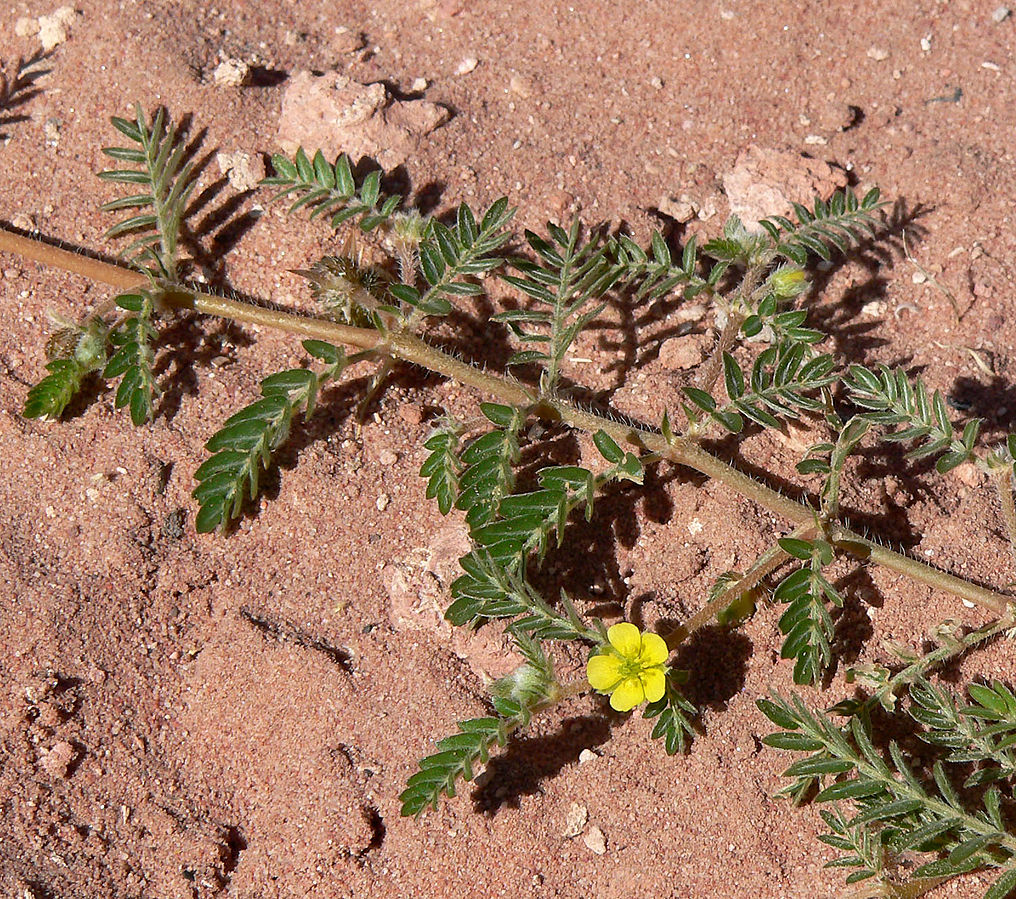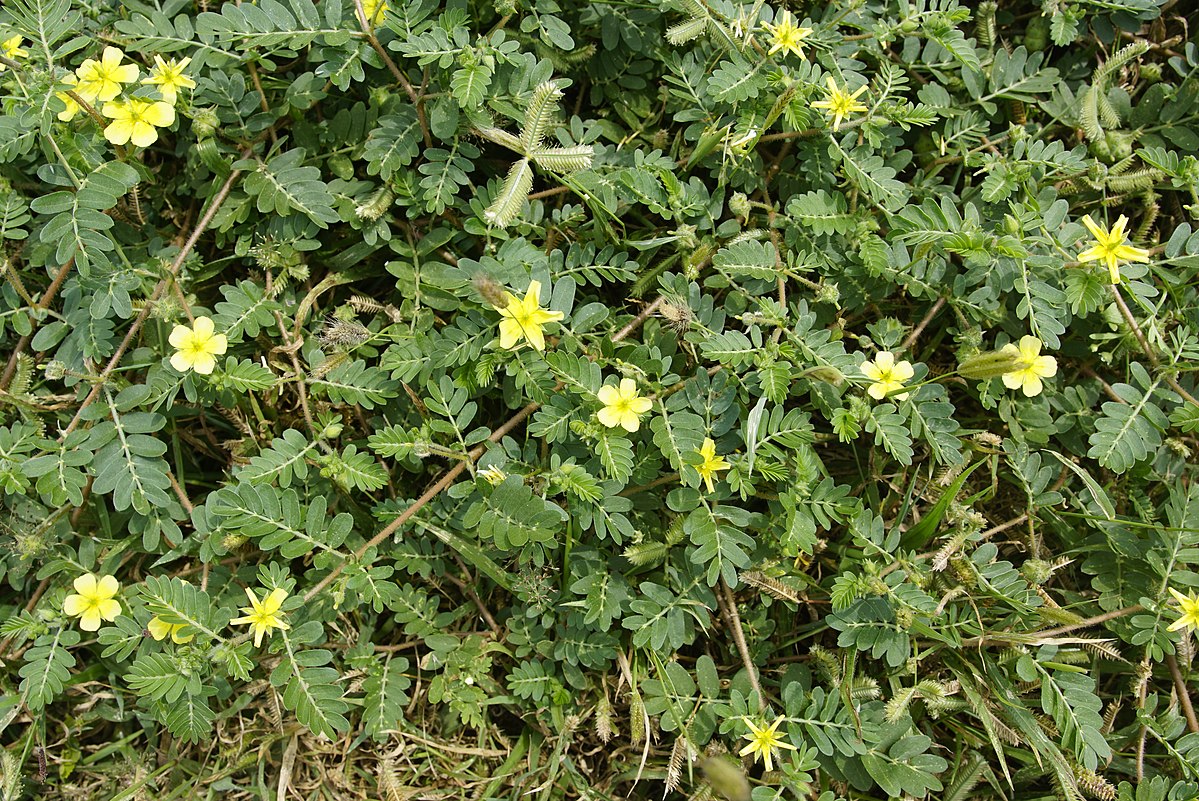Puncturevine

Puncturevine
(Tribulus terrestris)
Priority: - Prevent / EDRR
Tags: Terrestrial | Toxic | Biocontrol
Identification and Reproduction
Identification:
- Puncturevine is an annual plant that is very aggressive and hardy.
- Stems are greenish-red and extend up to 2 m long.
- Stems often spread laterally but will grow erect in the shade or when competiting with other plants.
- Leaves are 3-7 cm long, opposite but with one of the pairs being slightly smaller than the other. Each leaf is composed of 3-8 pairs of opposite leaflets.
- Flowers are yellow, composed of 5 petals, on short stalks, found in the leaf axils. Flowers only open in the morning.
Reproduction:
- This plant reproduces by seed.
- Seeds are spiny burrs and can easily attach to livestock, people, farm equipment and tires.
- Seeds remain viable in the ground for up to 5 years.
Habitat & Ecology
- This plant can grow in nearly any soil texture but thrives in dry, loose sandy soils.
- Deep roots can extend to depths of 2 m or more. Fine rootlets allow puncturevine to reach excess soil moisture.
- Commonly found in cultivated fields, pastures, gardens, vineyards, roadsides and other disturbed sites.
- Currently, it is found in Canada, occurring in BC and ON. In BC it is only found in the Okanagan Valley.
Impacts
Social:
- Known as a weed in competition with cereals, corn, legumes, tree crops, vegetables and even ornamentals.
- Seeds are a contaminant in hay, straw, manure, sand, gravel and dried fruit.
- The seeds can puncture shoes and bicycle tires.
- Burr seeds also injure livestock by wounding mouths, eyes, digestive tracts, and skin. This in turn can lead to infection and loss of livestock.
- This plant is also toxic to sheep, goats and cattle. It can cause paralysis and death in sheep.
Management
Prevention is a high priority for this species.
- Primary goal is to prevent the movement of seeds.
- Ensure clothing, shoes, pets, equipement and vehicles are clean and free of any invasive seeds prior to moving off site.
- Plant and maintain healthy ground cover to prevent the establishment of puncturevine.
- Do not move contaminated soil materials to a new site.
Mechanical/Manual:
- Shallow cultivation is effective to uproot this plant.
- Remove young infestations as soon as possible.
- If seeds have not set, hoeing and hand pulling small infestations can be successful.
Biological Control:
- There are two weevils that attack different parts of the plant.
- Microlarinus lareynii larvae feed on the seed and the adults feed on the foliage.
- Microlarinus lypriformis attack the plant stems by mining.
Resources
For more details check out the Invasive Species Compendium datasheet on Tribulus terrestris (puncture vine).
For more information on seed identification check out the CFIA's Weed Seed for Tribulus terrestris Puncturevine) here.
Download A Guide to Weeds in British Columbia for Puncturevine here.
Header photo (Krzysztof Ziarnek).





